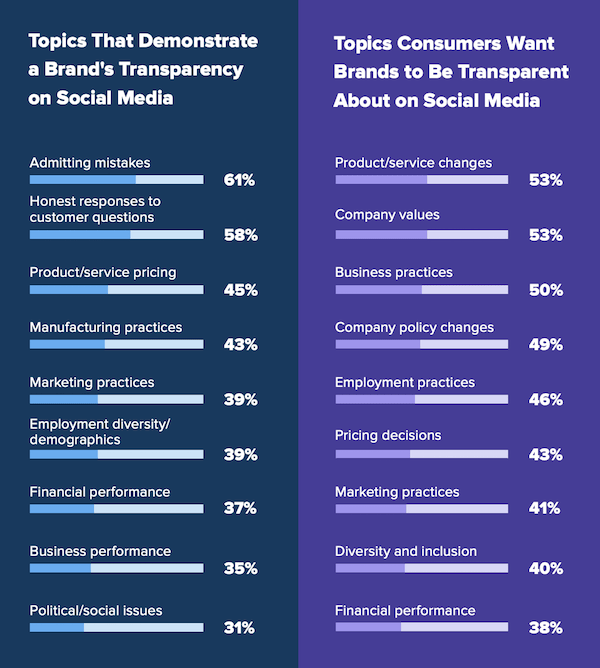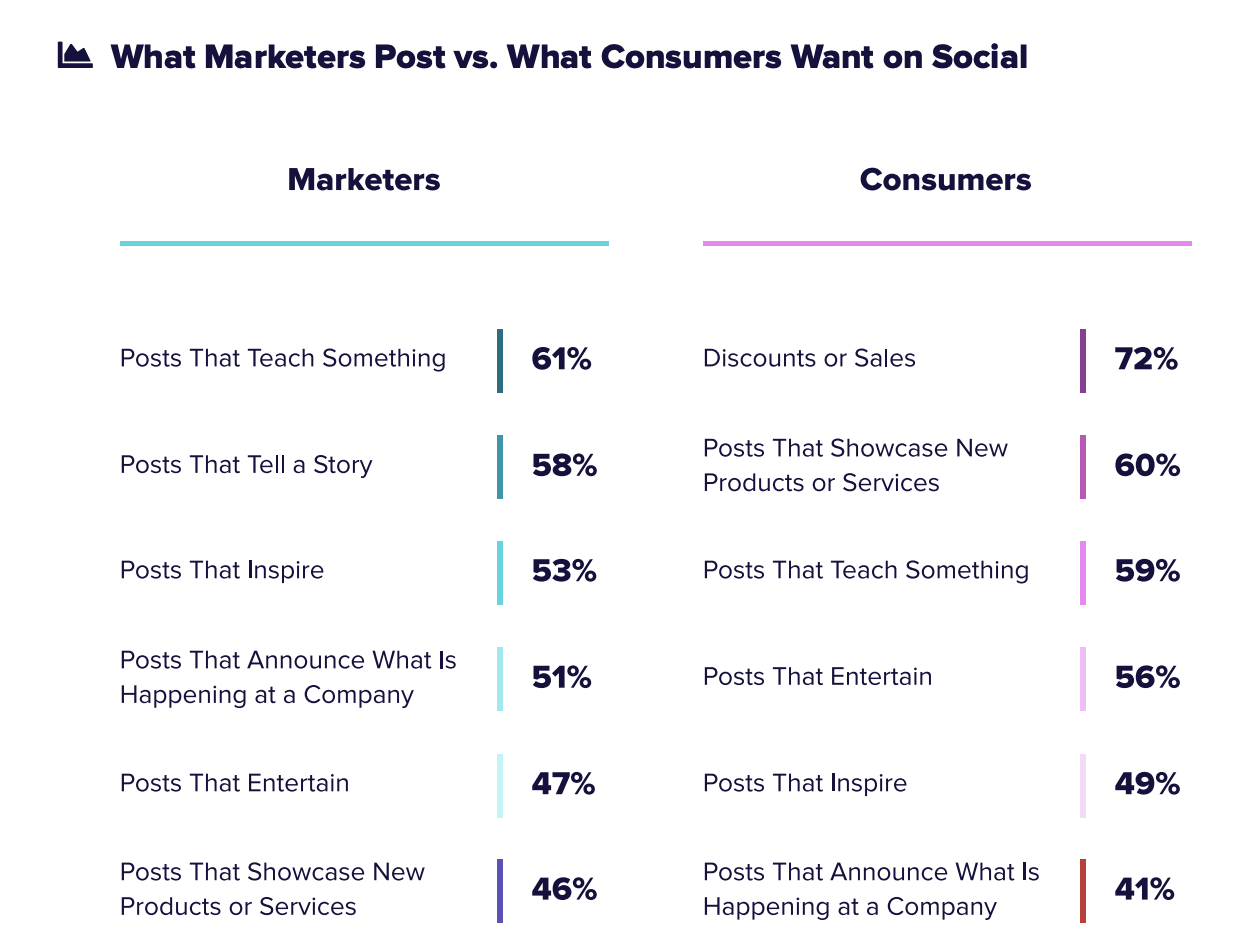Is your B2B brand just “keeping the lights on” when it comes to social media? This could be detrimental to your overall marketing strategy. Why? Because it’s the only effective channel where your customers can interact with your brand in real time. It not only amplifies every other marketing channel, but also comes in contact with multiple touchpoints on your customer’s buyer journey.
Unfortunately, there’s no magic formula for social media success. The channel is constantly evolving and pitfalls litter the landscape. Knowing what those pitfalls are and how to avoid them can go a long way toward realizing the true benefits of social media and leveraging its networks to create one of the most loyal audiences your B2B brand has ever seen.
Mistake #1: Not having a clear strategy
Far too often I hear B2B brands say they only invest in social media efforts because their competitors are doing it, and it would be irresponsible for them to ignore the social channel. This “keep the lights on” approach lacks strategy and results in a quantity over quality mindset, which never works out in the long run.
If you’re simply posting content to remain active, how will you know if it’s benefiting your business? Without a strategy, you have no way of understanding how social media meets your company’s goals. You’ll find yourself in a vicious cycle of not understanding the importance of social, and never leveraging its benefits, either.
To achieve meaningful results from social media, you have to develop and document a strategy:
- Outline the goals you want to achieve
- Determine how to achieve those goals
- Develop metrics to track your progress in achieving those goals
- Understand how your goals will impact larger business objectives
- Identify the resources and tools you will need to invest in to track and meet goals
Without a strategy, you run the risk of wasting resources on meaningless social activities, jeopardizing your ability to compete against more socially savvy brands in your space.
Mistake #2: Not being authentic and transparent
What makes the social channel so powerful is its ability to offer unique connections between brands and customers. But as the saying goes, “with great power comes great responsibility.” And in today’s B2B marketplace, audiences expect truth — they demand authenticity and transparency from the brands they care about. In a climate characterized by “fake news” and privacy concerns, customers penalize brands when they fail to be authentic or transparent.
A lack of transparency on social leaves 86 percent of people likely to take their business to a competitor, according to Sprout Social’s Social Media & the Evolution of Transparency report. And when it comes to customer expectations — 81 percent of people believe businesses have a responsibility to be transparent when posting on social media.
Although social asks a lot from B2B brands, it also provides a way to do it. If you want to stand out and do something truly remarkable on social, be open with your audience. You’ll be surprised how much they’ll open up to you:

Mistake #3: Targeting the same audience on each social channel
Companies make the mistake of posting the same content and messaging on every social channel. But each channel has its own demographics, unspoken rules and algorithms.
Let’s start with how age demographics differ, according to Spreadfast:

- LinkedIn: 36% are ages 18-29, 34% are 30-49, 28% are 50-64
- Twitter: 36% are ages 18-29, 23% are 30-49, 21% are 50-64
- Facebook: 88% are ages 18-29, 84% are 30-49, 72% are 50-64
- Instagram: 59% are ages 18-29, 33% are 30-49, 13% are 50-64
- Pinterest: 36% are ages 18-29, 34% are 30-49, 28% are 50-64
Source: Spredfast’s 2018 Social Audience Guide
Based on the data, age plays a significant role on how networks vary. For example, if you want to target millennials, look to Facebook and Instagram. These social networks could play an increasingly larger role in B2B as millennials gain even more influence in the buying process. What you should post on each network can vary, too. Video and photo posts that are emotional or provide a story tend to perform better on Facebook and Instagram. Twitter’s real-time community lends itself to breaking news, and LinkedIn dominates company and job news.
If Twitter, Facebook, LinkedIn and all the other networks accomplish the same things, why do so many people use more than one social network? Because we have unique expectations for each social network — and that’s why different types of content perform better on different networks. Even the social networks understand this and have changed their algorithms to fit those expectations. To make the most of social media, you need to develop a clear understanding of what types of content perform best on each social media network.
Mistake #4: You’re making it all about you
One of the big mistakes businesses make on social is focusing too much on what they want to achieve and pushing their own agenda. But isn’t that the point of marketing? Yes, to an extent, but pushing an agenda can’t be your only focus on social media.
Social media succeeds by creating relationships, and for a relationship to work, it has to be a two-way street. If you fail to focus on the customer, your social media strategy will fall short.
Start sharing content that your customer wants because it will make both of you successful. As a starting point, consider what Sprout Social’s recent 2018 Index Report reveals about consumers’ expectations from brands on social media vs. what marketers post:

Mistake #5: Failing to understand social media’s ROI
Understanding social media’s ROI is a difficult task for brands. In fact, it’s even difficult for experts — 55 percent of social marketers say that measuring ROI is a top challenge. Traditionally, brands go straight to tracking sales on social media, but only 14 percent of marketers say they are able to quantify revenue from social.
The difficulty isn’t that social fails to generate sales, it’s that social hits multiple touch points during the customer journey and may not be directly attributable to a sale. In some ways, social media is similar to the mobile channel in e-commerce. Everyone uses it for shopping, but they may not use it to make an actual purchase.
Another point that obscures social media’s ROI is the fact that social depends on other marketing channels and assets. You need quality content and an integrated approach to see success on social. Without it, you don’t have much of a strategy. This can come from video, design and a range of owned and earned media channels. Companies that invest in these assets enjoy a larger social presence than companies that don’t. There are steps social media marketers can take to compensate for this, but it significantly limits your strategic goals and ROI.
To improve ROI, understand that social media is a complex channel, especially in the way it functions in the customer journey and your marketing strategy as a whole. Social media ROI will never be cut and dry, but understanding these components will point you in the right direction.
Mistake #6: Failing to invest time and effort
When it comes to social media, you can’t simply flip a switch and see an increase in leads or conversions. Like building a relationship from scratch, it takes time and effort. And I don’t mean a few hours, I mean days, months and even years.
The time requirement shouldn’t discourage you from tackling social media, but you have to set realistic expectations. If you have an intern working 25 hours a week to manage your brand’s entire social media strategy and expect it to go “viral,” you will probably be disappointed. But if you understand that a great social media strategy takes time, the results will speak for themselves.
Mistake #7: Not evolving
Most social media pitfalls boil down to a single truth — brands often fail to evolve their social media strategies over time. This is a fatal flaw because social media changes so quickly. As social evolves, so does the way that people use it. If you fail to change your tactics to align with the ways users interact with each network, you will get left behind.
To remedy this, you need to keep up with the latest trends and best practices. Although this may not be easy to manage with everything else on your plate, it’s necessary, I promise. Fortunately, there are a few simple hacks that make it easier to stay on top of all things social.
- Subscribe to newsletters: Instead of searching the Internet every day for information, make it come to you. Here are some of my favorite ones:
- Social Media Today, Hubspot, Social Media Examiner
- Get certified on social media:
- HubSpot Academy’s free online Social Media Certification
- Facebook BluePrint
- Make a Twitter List of influencers in the industry
These are just a few of the many ways you can stay informed. Armed with information, you’ll be better prepared to turn knowledge into action.
Don’t stick with what’s comfortable
Social media changes too much and too often to play it safe. Don’t keep making the same mistakes. Sometimes the only way to learn what works is to try something new and see where it takes you.
Combine the data you already have with the latest trends and best practices from your research. Then throw in a little trial and error, and a lot of transparency, and turn it into genuine action to create an innovative and authentic social media experience.
Ready to learn more? Contact us today and let’s talk about how our team can help your B2B organization turn a social media strategy into a business advantage.


